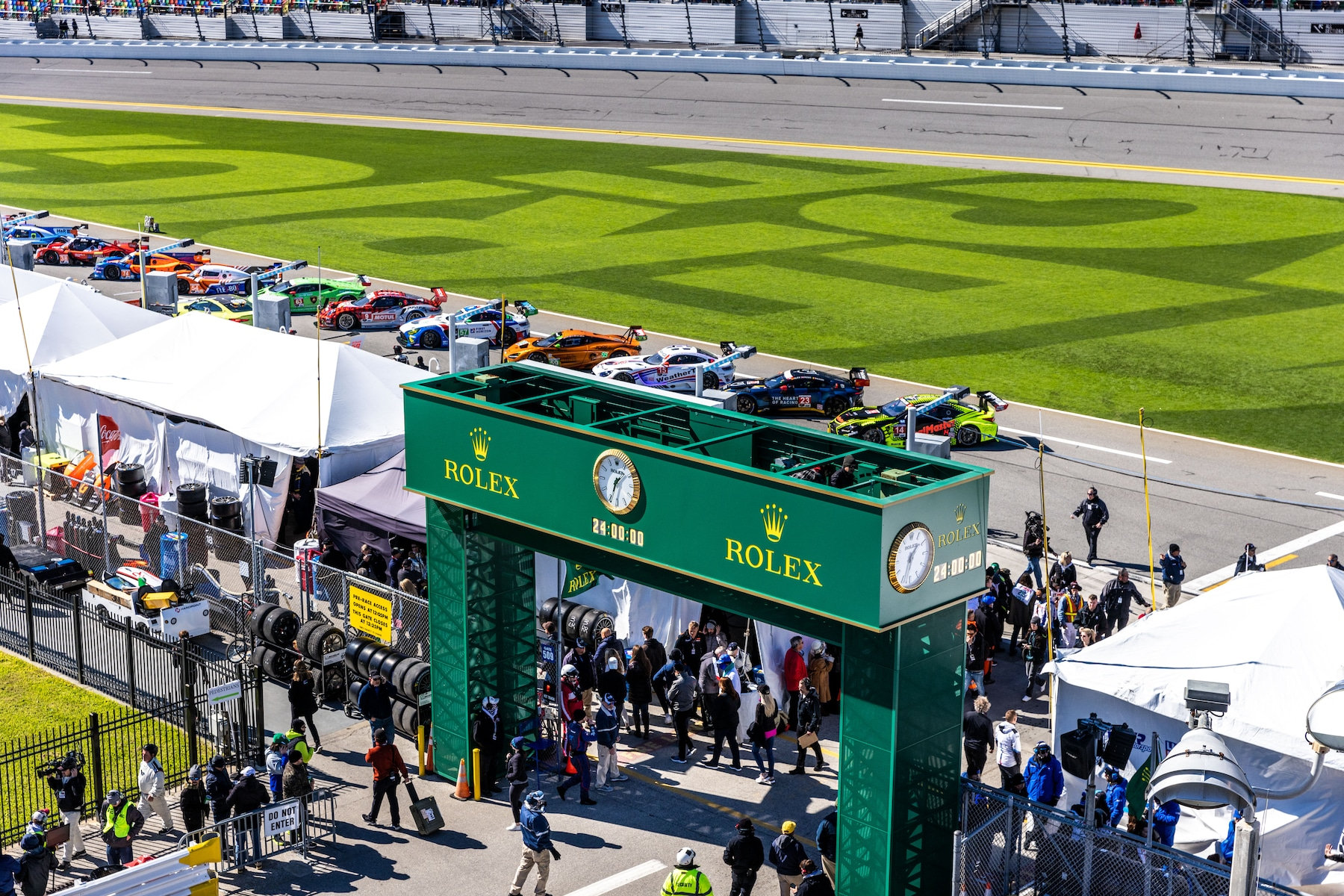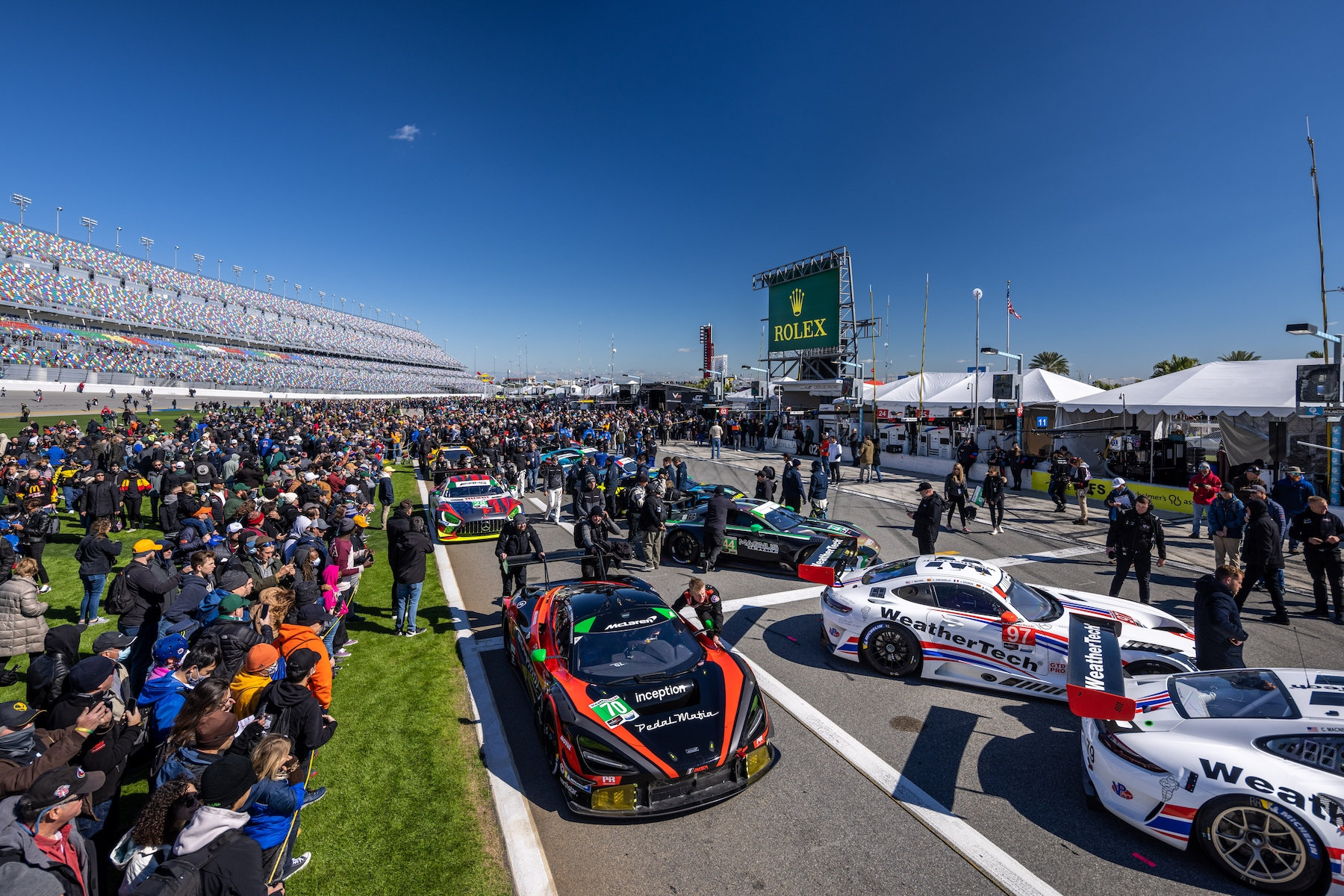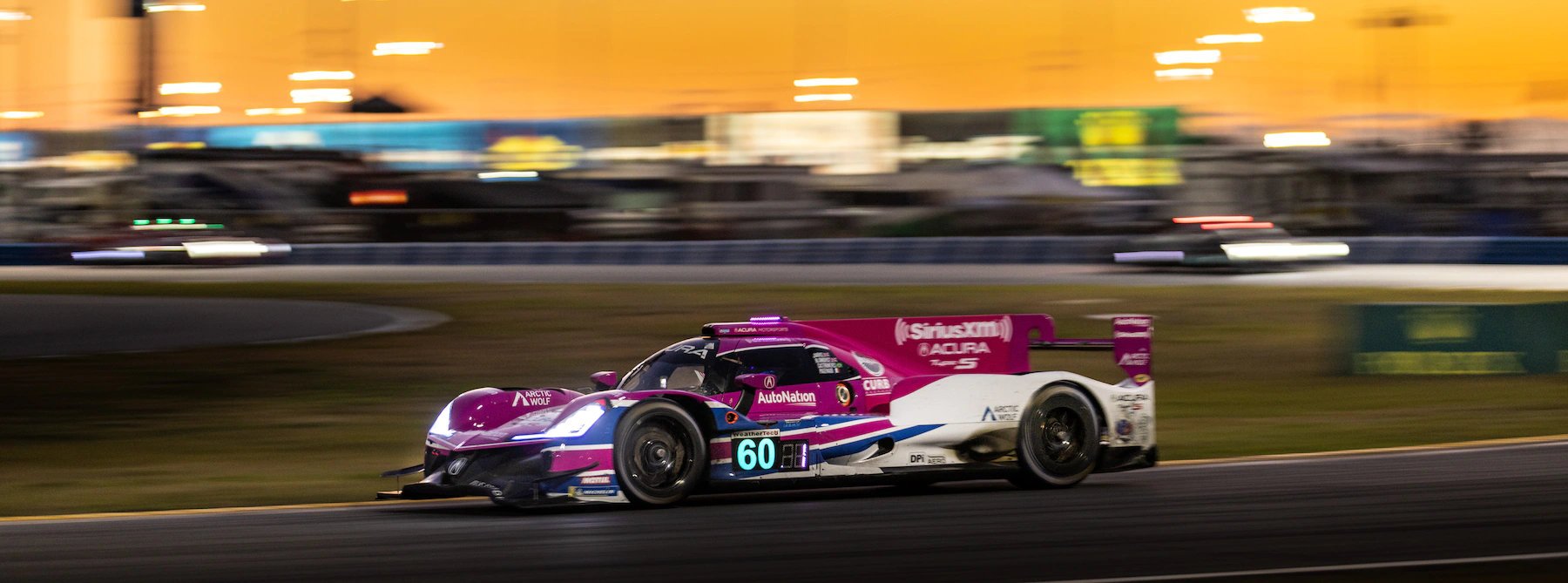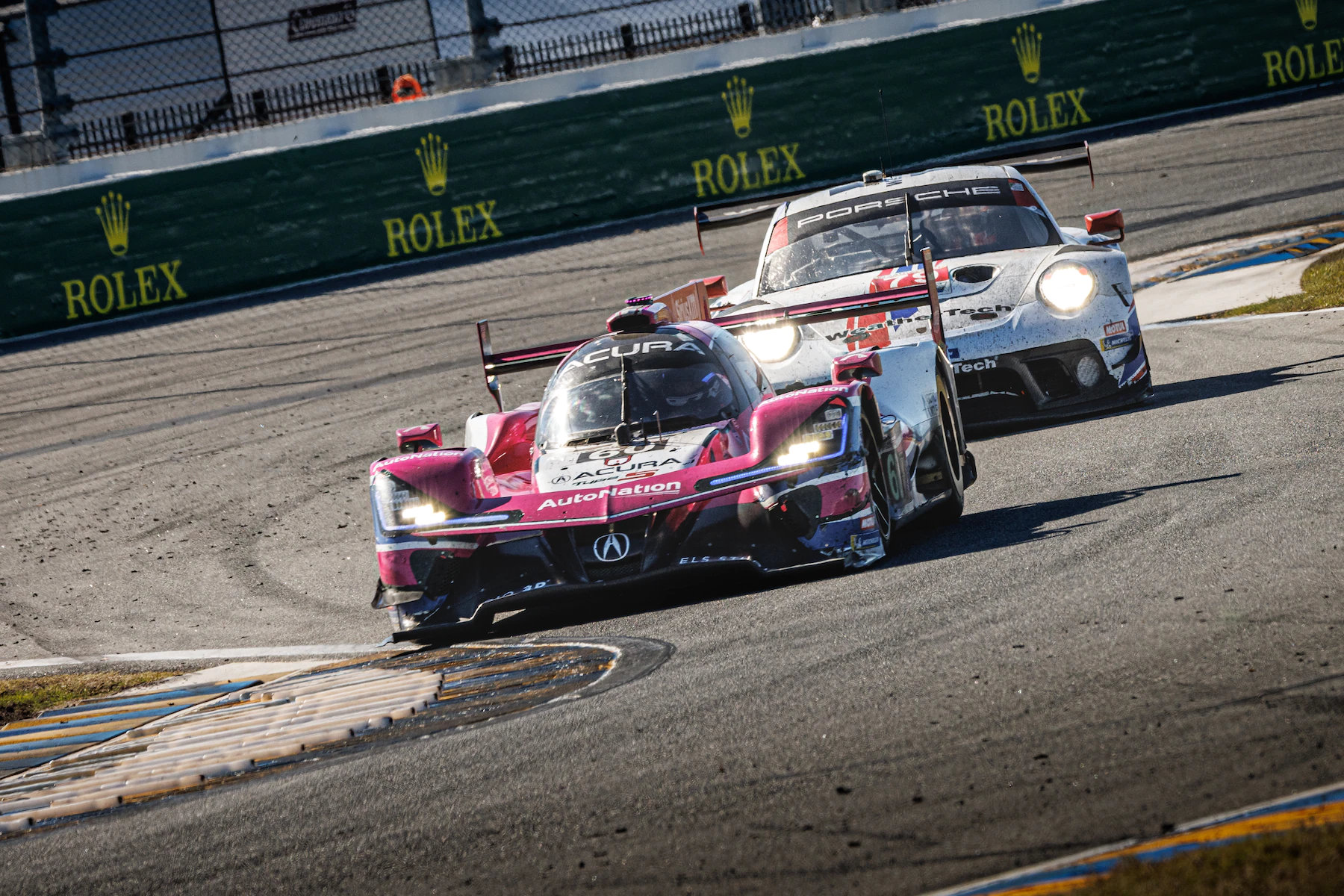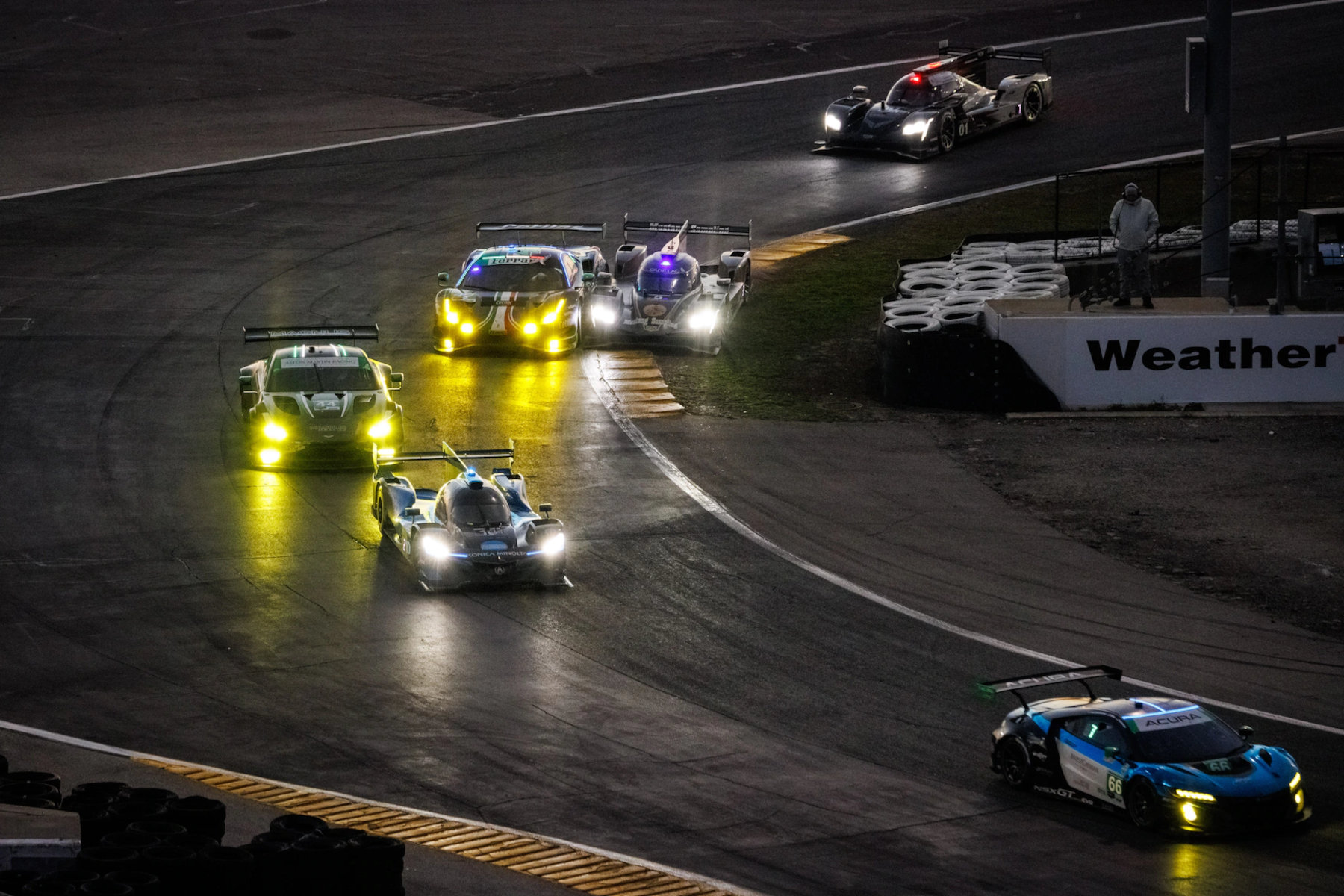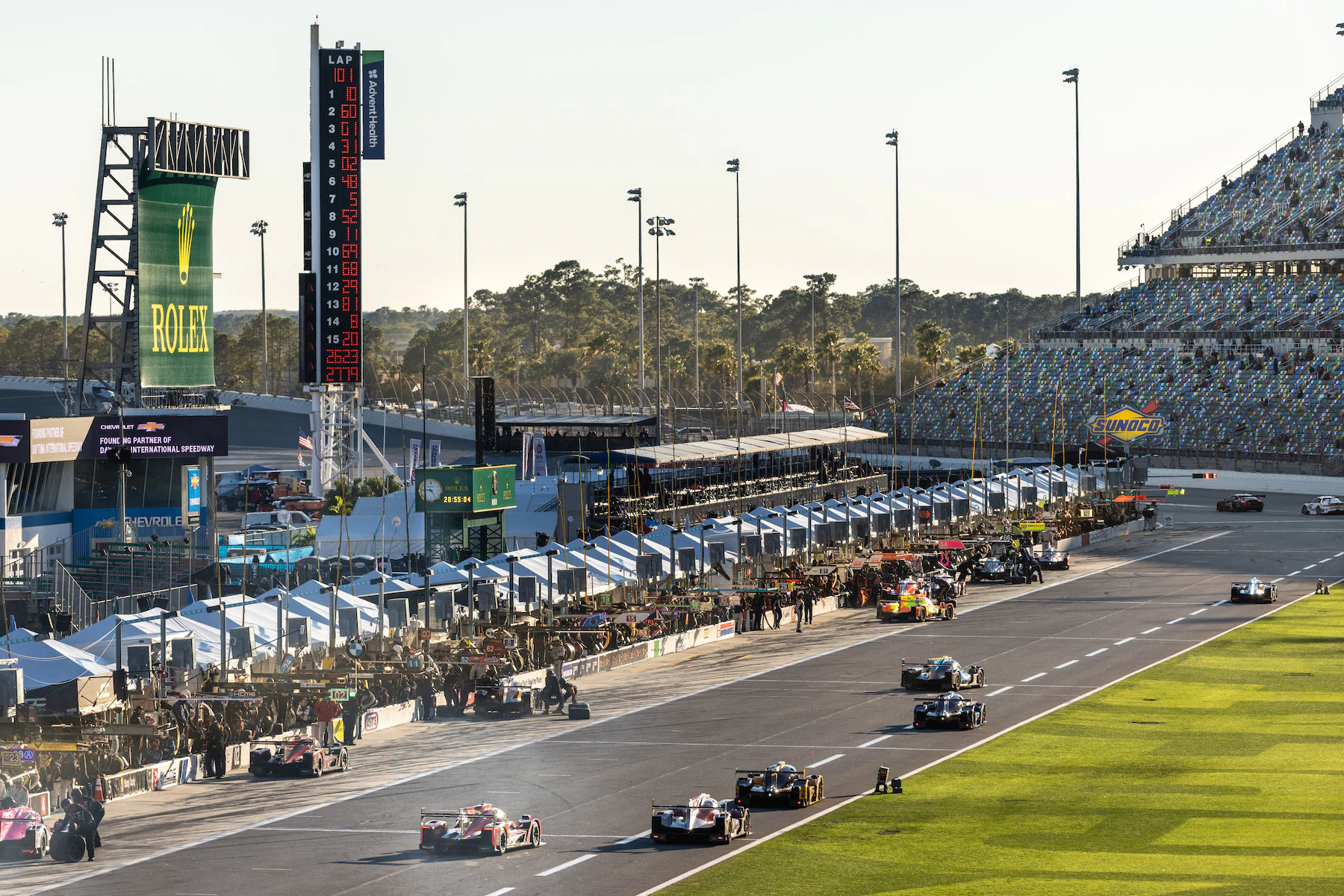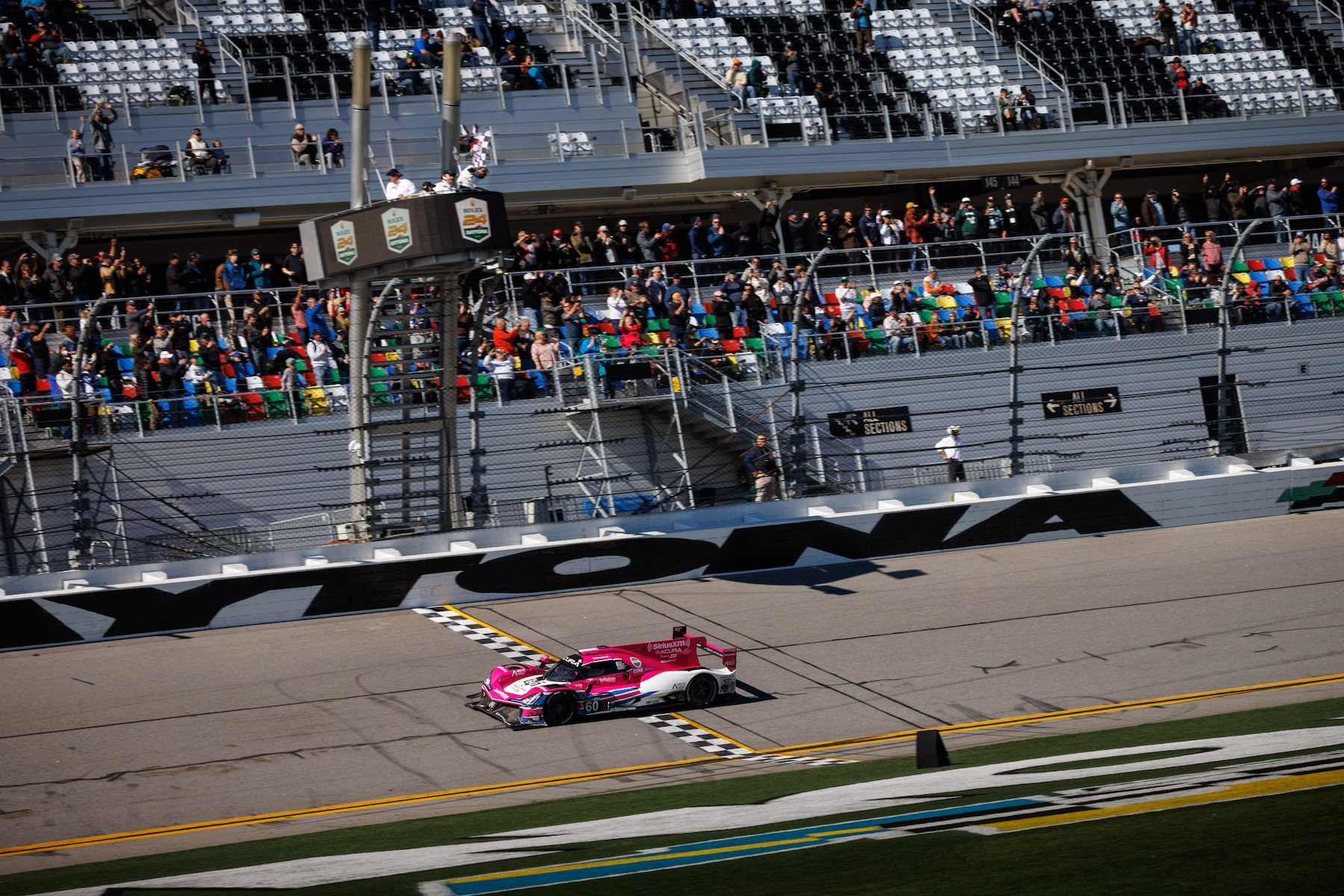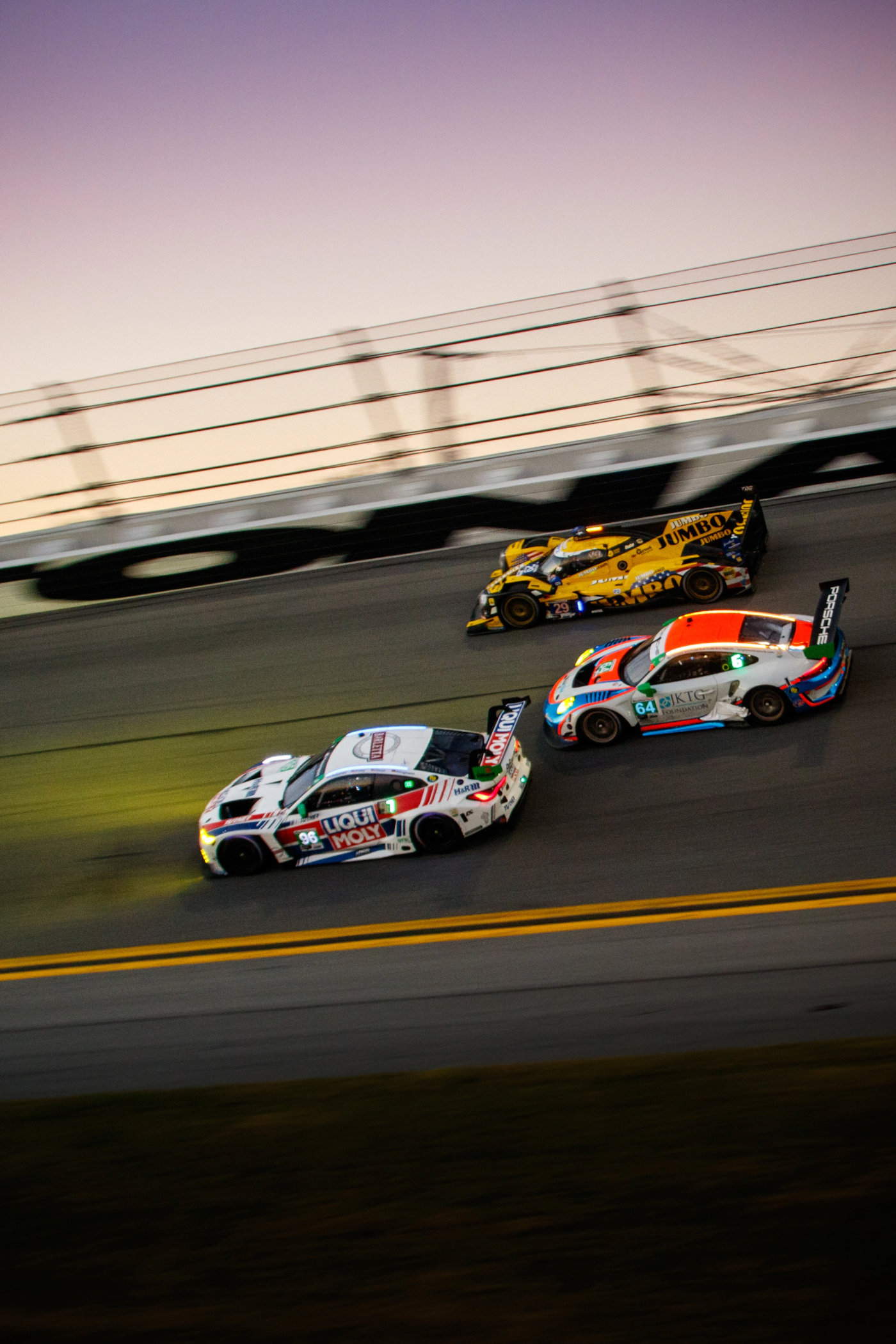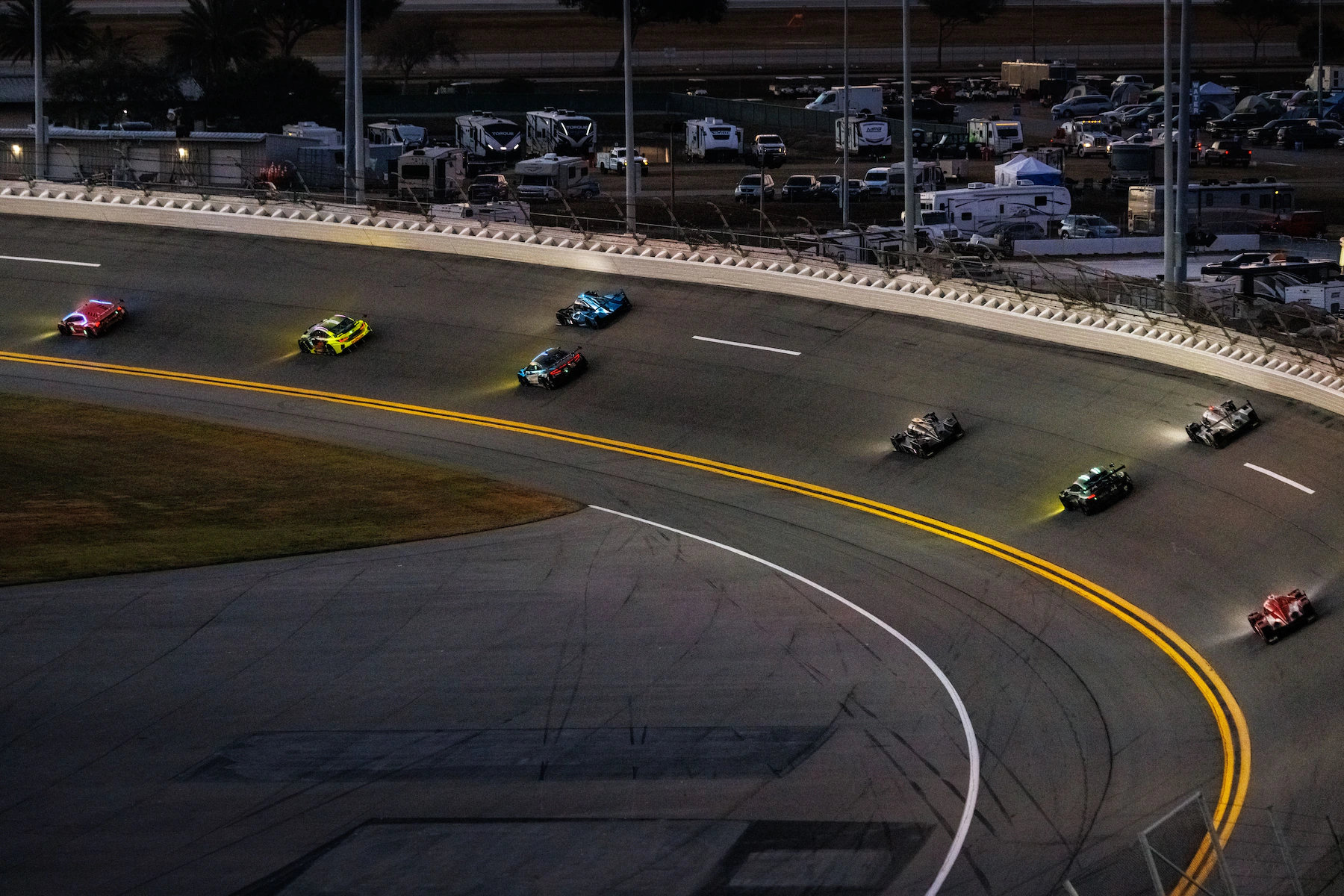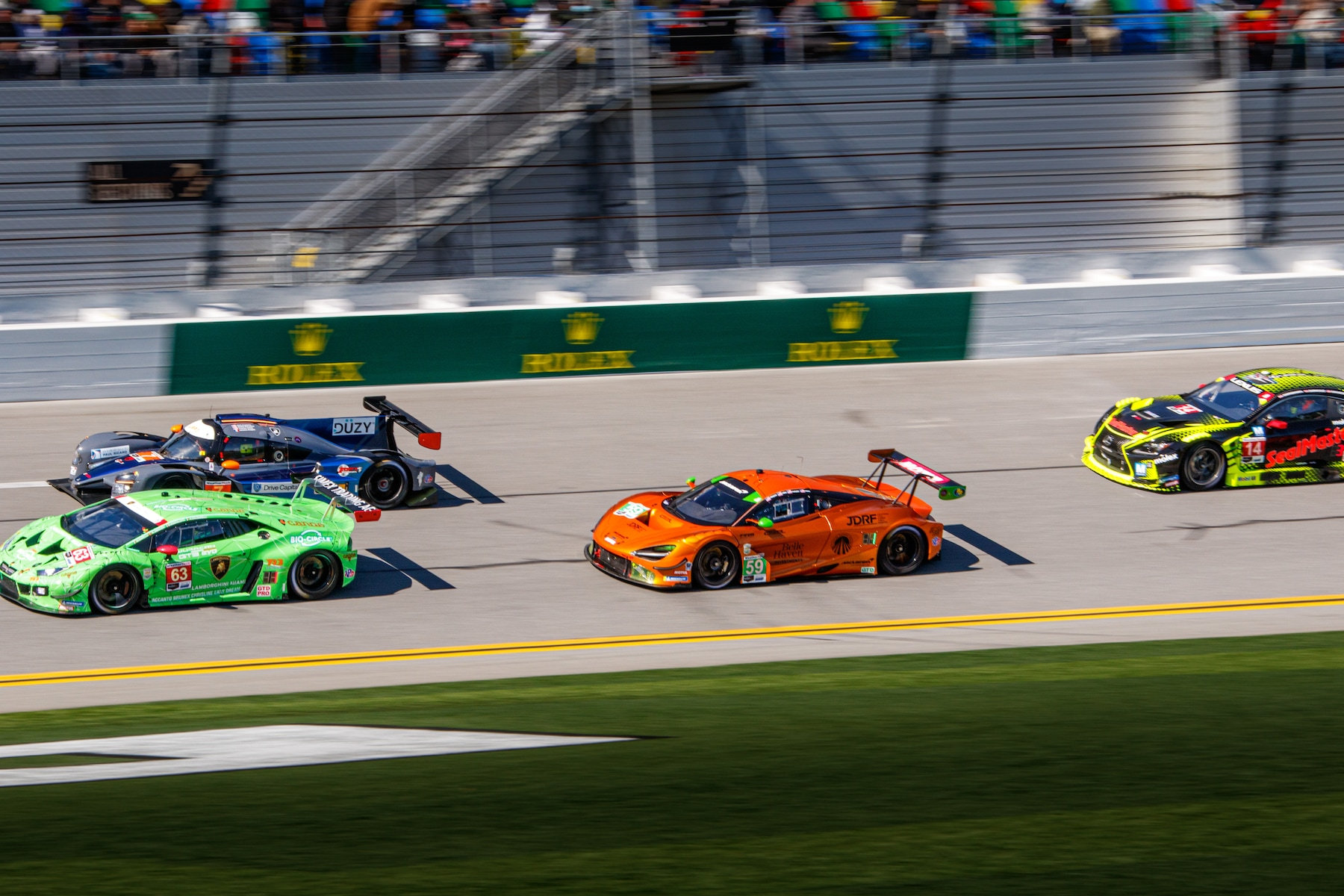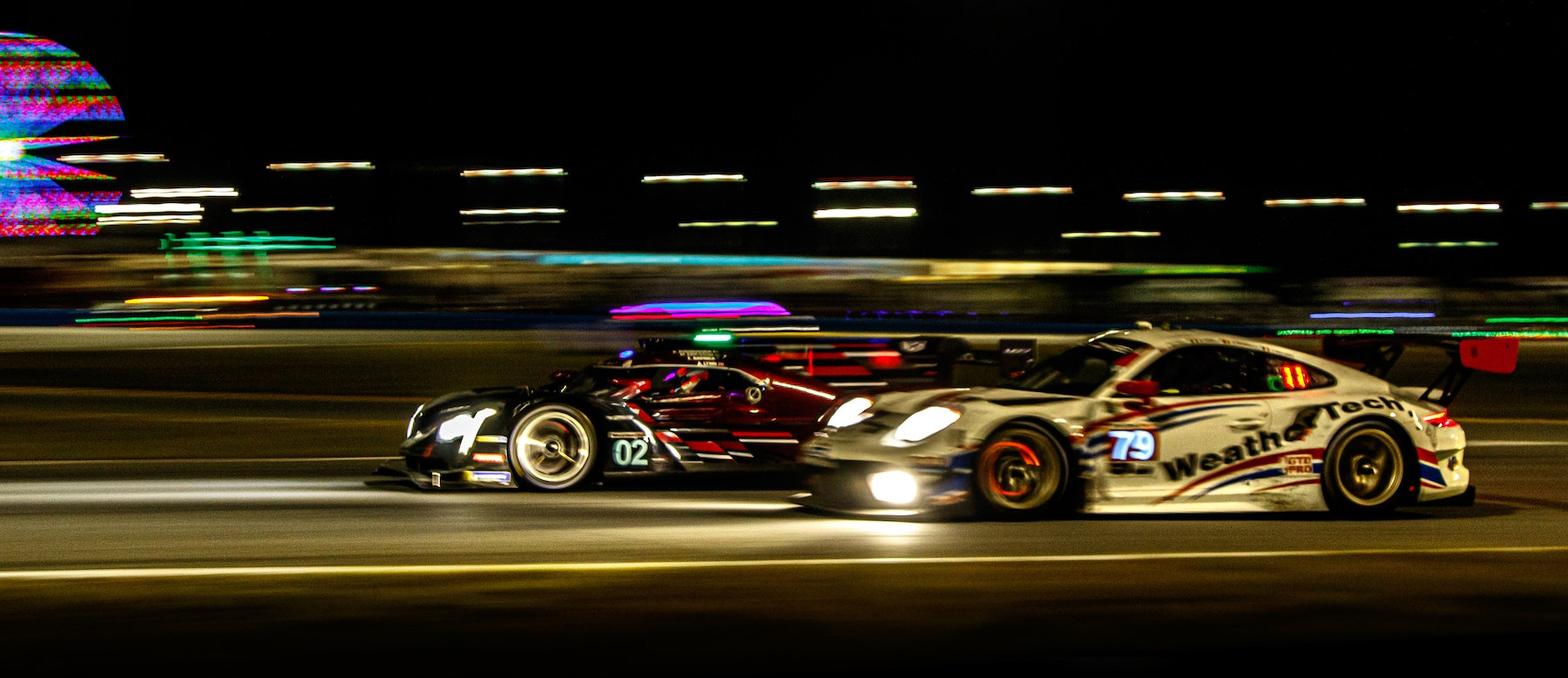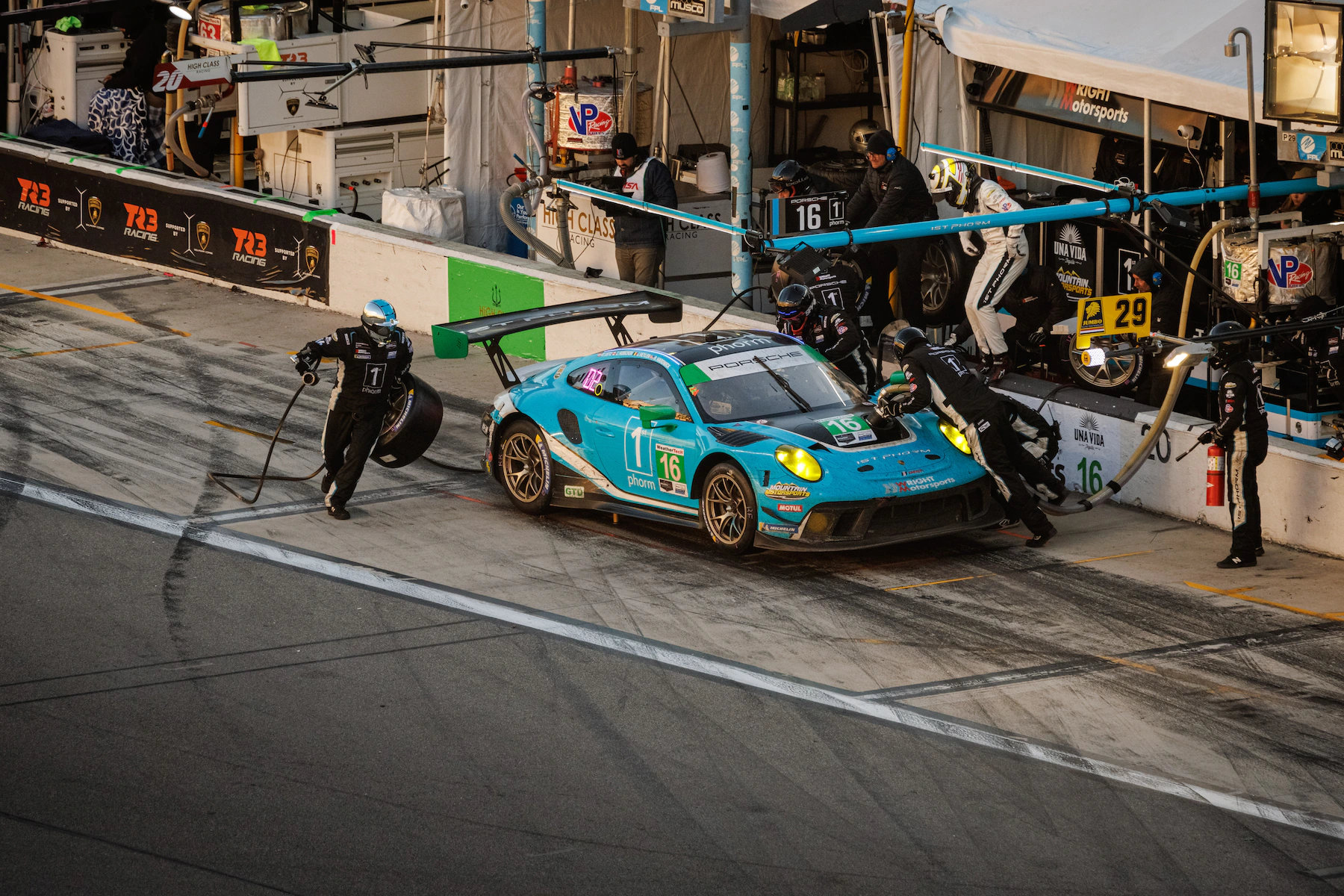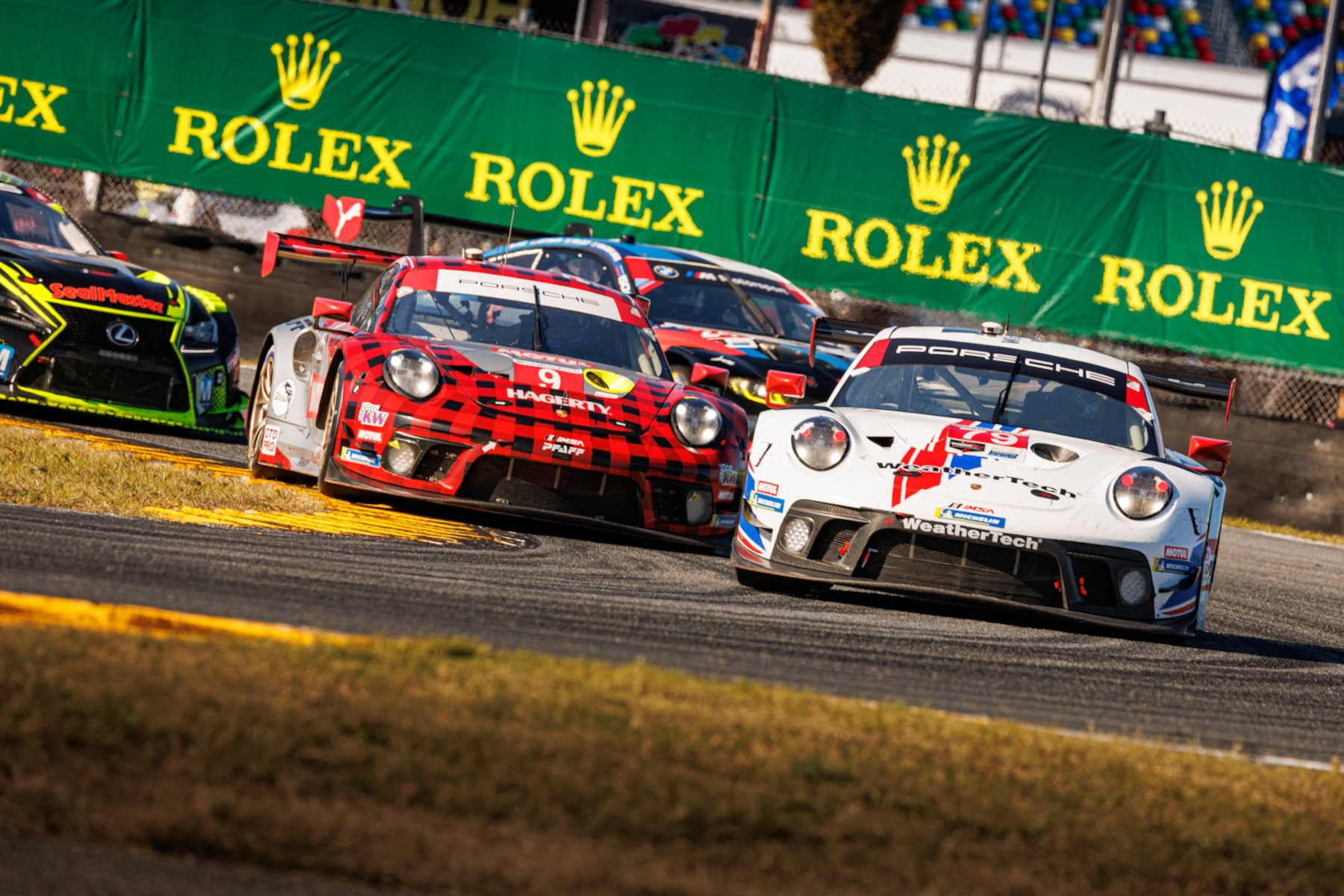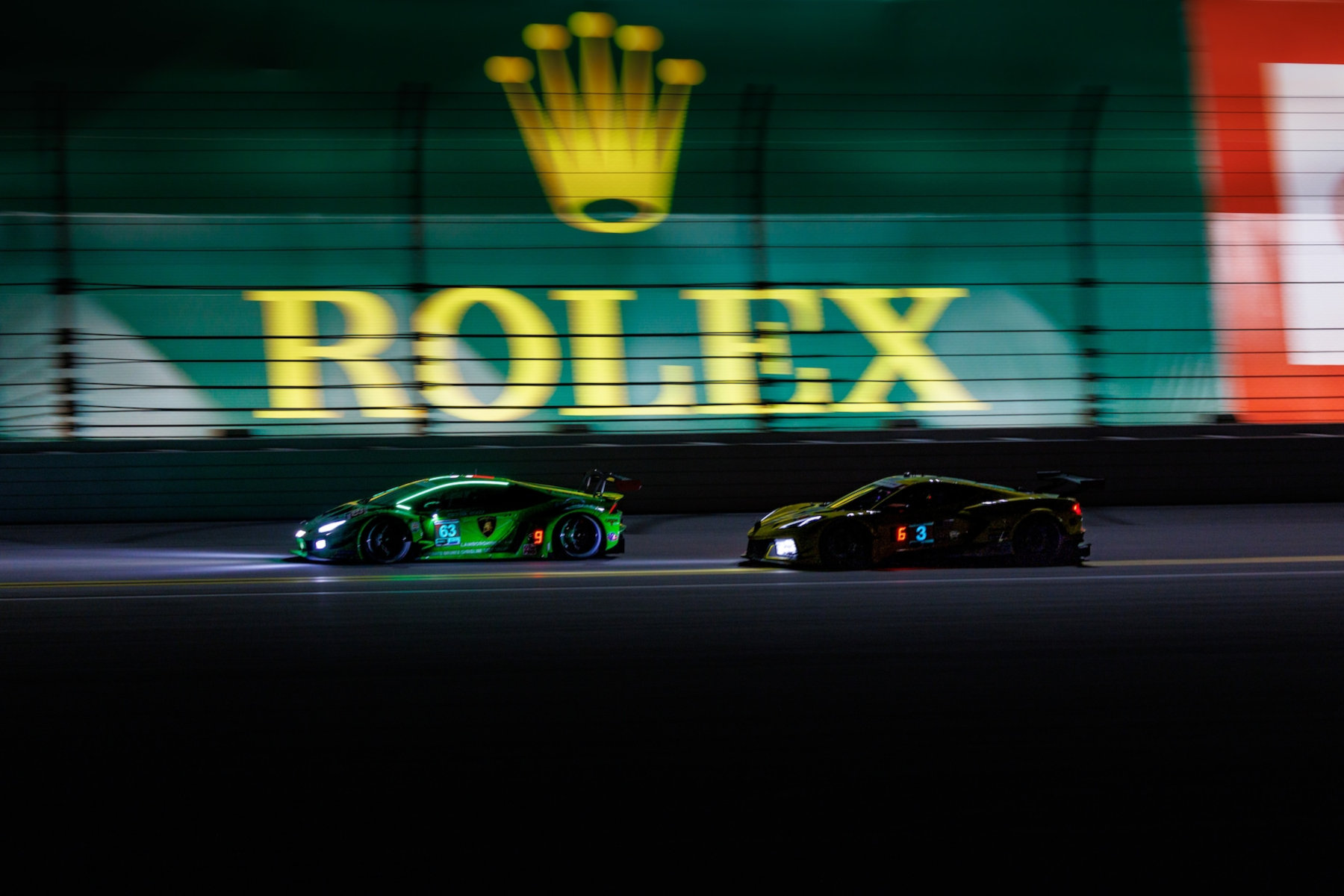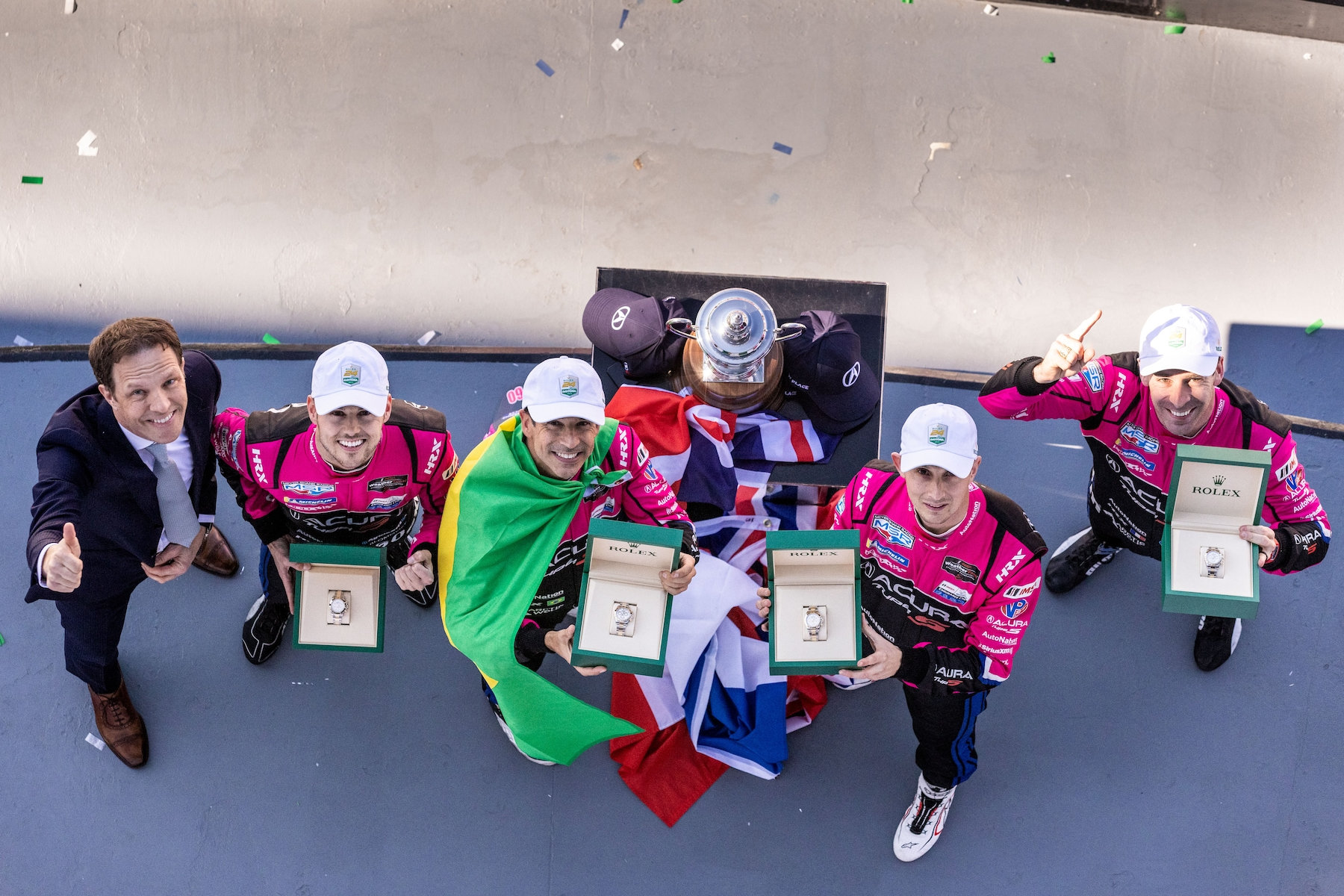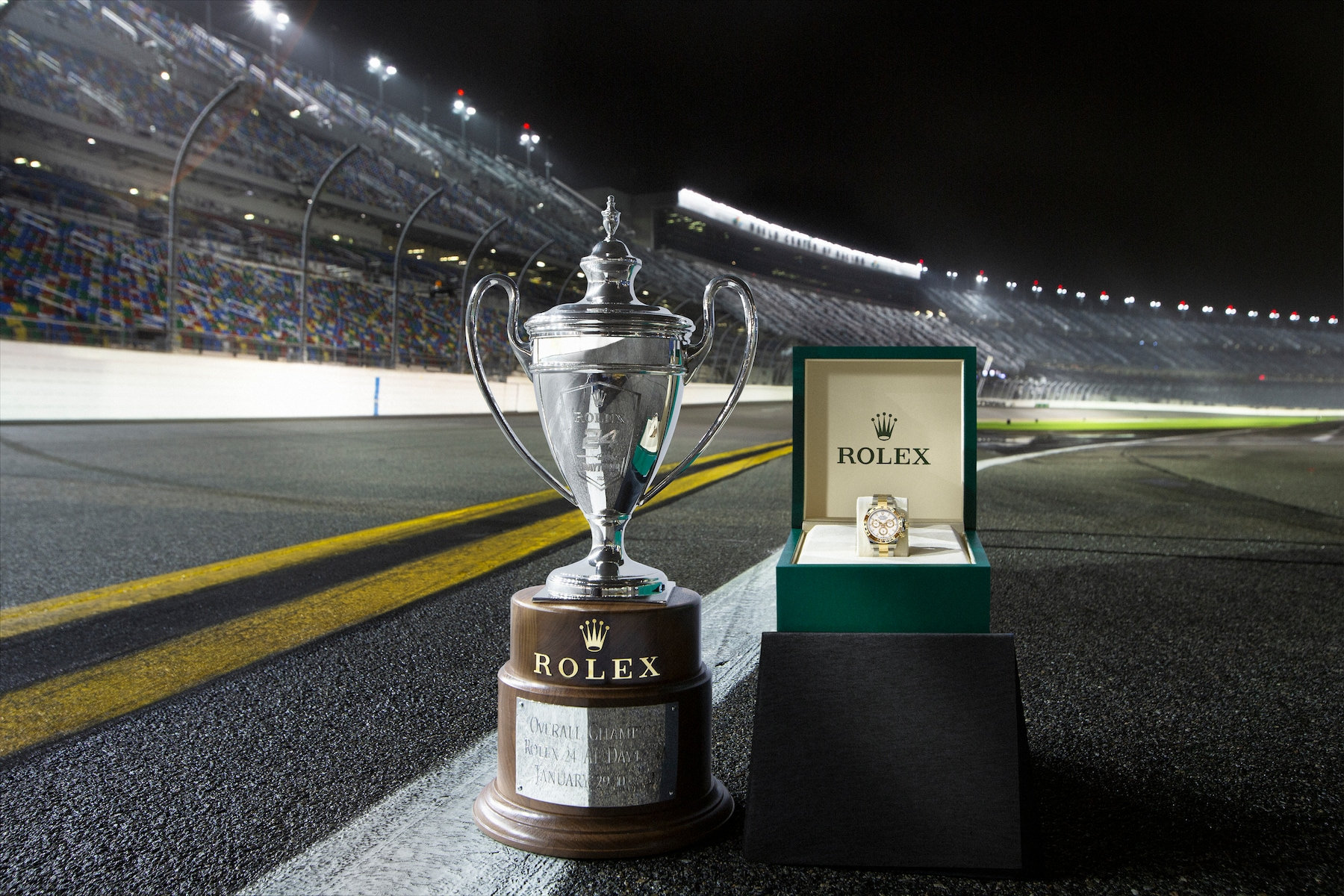Fast Cars, Rolex Watches and A Thrilling Finale for the 60th Edition of The Daytona 24 Hours
After 24 hours of racing, Meyer Shank Racing roars to victory only seconds ahead of the runner up.

The 24 Hours of Daytona, also known as the Rolex 24 at Daytona, has always been a fascinating entry in the world of endurance racing. It might not serve the dramatic scenery of the 24 Hours of Le Mans, Spa Francorchamps or the Nürburgring, but it is still one of the all-time classic events of the year. Especially seeing multi-class racing for a full 24 hours on the legendary banked corners of the Daytona race track. It’s right up there with the Monaco Grand Prix, the Indy 500, et cetera. This year the Rolex 24 at Daytona celebrated its 60th anniversary, and the racing was as close-fought as ever, with some surprising results. Here’s the rundown of all classes and the race overall.
The Rolex 24 at Daytona is held in Daytona Beach, Florida on the Sports Cars Course, which combines the infield with the famous oval track. It’s open for teams to race in several classes, almost identical to the 24 Hours of Le Mans for instance. The fastest class this year is the DPI class, which is comparable to Le Mans’ LMP1 category. This year saw seven entries under DPI regulations, ten entries in the LMP2 category, and nine in the LMP3 class. IMSA also allows for GT cars to compete, under two separate classes. This is the last year under current rules and regulations, as from 2023 IMSA will align with the ACO governed LMDh regulations. The aim of the joint regulations is to reduce costs and stimulate more teams and manufacturers to compete.
DPI Class
A total of 61 teams competed in this year’s race, a record since 1974, with the DPI class fielding 7 entries. It will come as no surprise that these cars are quite a bit faster than the lower tier categories. This poses big challenges for the drivers, especially on such a relatively short track. The Road Car Course is only 5,7km long, and as such the fastest drivers find themselves continuously coming up on back-markers. At Le Mans, for instance, a little of 13km in length, this is a bit less of an issue.
The 2022 24 Hours of Daytona was one of records, not in the last place for the remarkable close finish between the top teams. It was actually one of the closest in the event’s history, as the top four spots overall (all DPI class cars) were separated by no more than 6 seconds. In essence, that means that after 24 hours of racing, it was pretty much all open for the four teams at the front and really anybody could have clinched the victory right at the end. All cars had lead parts of the race, which is also something you rarely see happening in such events.
The Meyer Shank Racing team would be the ones to come across the line first after completing the final lap after 24 hours, with Brazilian driver Helio Castroneves winning his second straight 24 Hours of Daytona win. Together with his teammates Tom Blomqvist, Oliver Jarvis and Simon Pagenaud, he would have a lead of only 3 seconds over second-place finishers, the Konica Minolta Acura racing team. Less than 1.4 seconds after that came JDC-Miller Motorsports, closely followed by Whelen Engineering Racing.
LMP2 & LMP3 Classes
Just like the DPI category, the LMP2 and LMP3 classes had its fair share of drama and action throughout the entire race. Although the cars are not up to speed with the DPI class, naturally, the LMP2 and LMP3 cars are still considered prototype racers with plenty of get-up-and-go.
The LMP2 class fielded Oreca and Aurus cars, powered by Gibson V8’s. This combination is well-known for a couple of years as regulation dictates the use of pre-determined chassis and engines to keep the costs down. In essence, this means that with the right preparation and a good line-up of drivers it is pretty much anybody’s game. A dramatic lead-change with only eleven minutes to go meant that DargonSpeed USA Oreca-07 Gibson took the win. This car, driven by Eric Lux and Devlin DeFrancesco completed 751 laps, only 10 behind the winning DPI car, and came in 5th overall. Regularly seen contender Racing Team Nederland (the bright yellow Jumbo-sponsored LMP2 car in the image above) finished in an impressive second place in class after having some mechanical troubles throughout the race.
In the LMP3 category, it was the Riley Motorsports Ligier JS P320 that came across the finish line first in class. The team, quite a legendary name in the world of endurance racing, managed to complete 723 laps, with divers Kay van Berlo, Michael Cooper, Felipe Fraga and Gar Robinson. Second in class was the #33 Sean Creech Motorsport Ligier, with a lap down on the class winners.
GTD Pro & GTD Classes
In pretty much every multi-class endurance race like the Rolex 24 at Daytona, the GT cars dominate in terms of numbers. This year was no exception, as no less than 35 cars competed in GTD Pro and GTD racing, more than half of the entire field. The entry list consisted of some of the usual suspects; Porsche, Lamborghini, Ferrari, Chevrolet. In both categories, a Porsche took the chequered flag, with Pfaff Motorsports winning the GTD Pro class and Wright Motorsports claiming the win in the GTD category.
The GTD Pro category was again heavily contested, much like the DPI. Again four cars found themselves on the same lap towards the end of the race. Due to a late full-course caution, the race pretty much ended in a 30-minute dash to the finish line. Two Porsches, a Lamborghini and a Lexus battled for the win, completing 711 laps and finishing just seconds apart.
Wright Motorsports managed to control the final stages of the race the best, timing the last pitstop pretty much perfectly. Shortly after, that aforementioned full-course caution meant the team could retake the lead as its main rivals had to pit under yellow, losing valuable time. Eventually, Wright Motorsports lead 120 out of the final 125 laps, and came in 23rd overall, but more importantly; first in class.
Rolex & Daytona
For years, Rolex has been connected to the world of motorsports, and the Daytona 24 Hours race. This 60th edition marked over half a century of involvement by Rolex with the legendary endurance race. It was also the brand’s 30th edition as title sponsor, and just like every year, each class and/or overall winning team is presented with a Rolex Daytona timepiece featuring a special engraving on the caseback.
As the event heads into a new era, under new regulations and in close partnership with the Automobile Club de l’Ouest (the Le Mans 24h organizers) the future looks quite bright for the Daytona 24 Hours. From next year onwards, it is made easier to compete in both events with the same car. And as Rolex is connected to both, this only tightens Rolex’s “grip” on endurance racing.
Editorial note; The images portrayed in the article are provided by Rolex.


